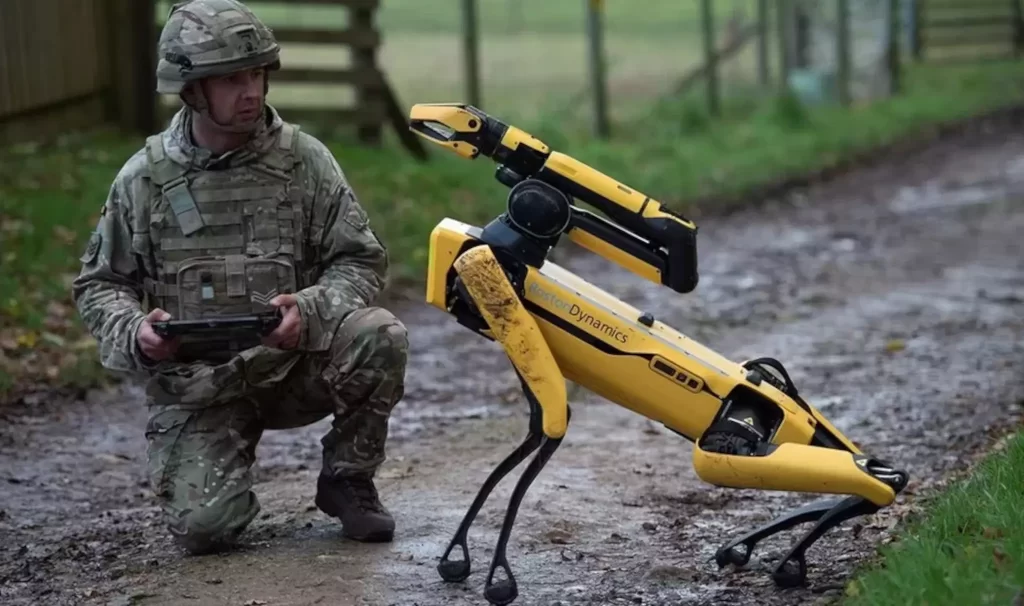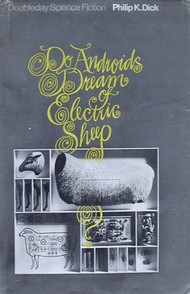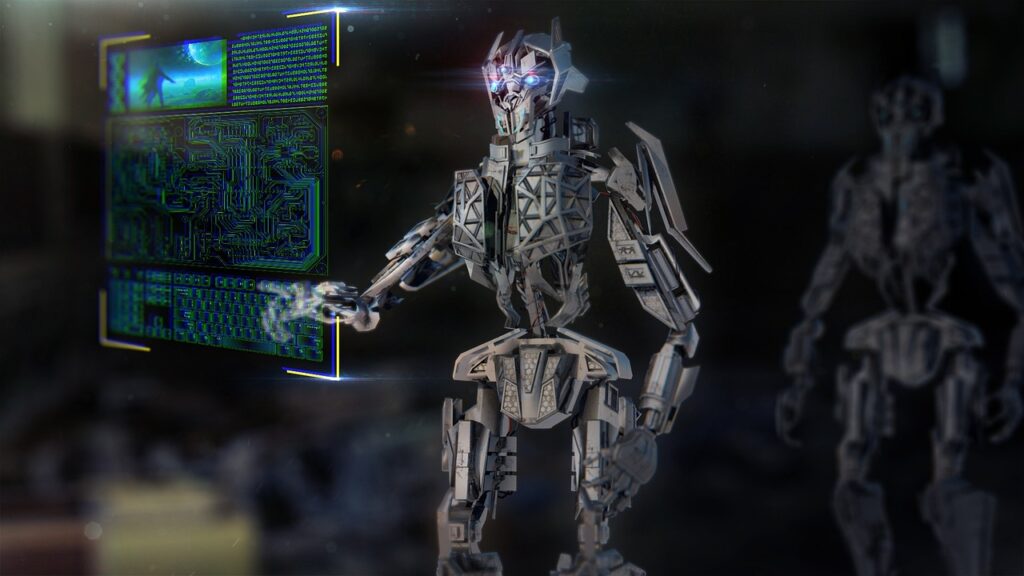When writing science fiction, you might find yourself in a position where you have to create a fictional technology in order to complete the story.
It might be as small as a nanochip or as large as a generation ship, and all things in between.
Get the tech right, and you’ll end up with a better sci-fi story. Get it wrong, and you might lose the reader (especially if they know more about that particular technology than you do).
So, what’s a non-technical science fiction writer to do?
Don’t let a lack of technological knowledge prevent you from writing sci-fi. There are ways to navigate around this obstacle, and we’ll explore seven of them in this guide.
What Type of Story Are You Writing?
Not all science fiction stories focus on futuristic or alien technology. This can vary from one story to the next. So the first thing you should do is think about the type of story you’re writing.
People often use the “hard” and “soft” designators when making such distinctions:
- Hard science fiction emphasizes scientific accuracy and realism. It recognizes and adheres to the known laws of physics, technology, and science. Hard sci-fi often includes detailed explanations of the science and/or technology featured in the story. Andy Weir’s The Martian is a good example.
- Soft science fiction tends to focus less on the technical details of science in favor of the human aspects. It shows how the scientific or technological elements of the story affect everyday people. Soft sci-fi often includes social, political, psychological, or emotional elements. Ursula K. Le Guin’s The Left Hand of Darkness is a good example.
Of course, this is an oversimplification. The science fiction genre covers a broad and ever-evolving spectrum, rather than falling into one “camp” or another.
Still, these distinctions can help you decide (A) what kind of story or novel you want to write and (B) how much research you’ll need to pull it off.
How to Create Fictional Technology for a Sci-Fi Story
You’re writing a science fiction story. You come to a scene that requires you to describe—or at least mention—some kind of technology that does not currently exist in our world.
Warning bells ring inside your head.
How do I describe this thing if it doesn’t yet exist? What if I get it wrong? What if people see through it?
Step one: don’t panic.
The annals of science fiction history are filled with authors who (A) had no formal training in science or technology but (B) wrote about it anyway—and often with great results.
And you can do it too!
Here are seven specific strategies to help you do it well…
1. Springboard off today’s cutting-edge technology.
If you want to write about a specific type of technology in the future, or on an alien world, you should take a close look at today’s cutting-edge technology. This is a great source of inspiration.
You can find this kind of information online with some cleverly constructed Google searches. If I want to write about a fictional (but plausible) form of nanotechnology, I could use the following searches to see where that technology is today:
- nanotechnology breakthroughs
- cutting-edge nanotechnology
- latest advancements in nanotechnology
These and similar searches will deliver a treasure trove of useful information. Best of all, it shows where this technology is right now, and what might be possible in the future.
From here, I could ask: What’s the next logical step in this advancement? And what’s the next possible step after that?
You can do the same research for any kind of tech, from AI to vehicles to weapon systems. In all cases the goal is the same. You want to know what’s possible right now, on the forefront of technological development, so you can springboard off of it.

Use your imagination to build on current technologies. Advance them. Create more capable versions, beyond anything we have today but still grounded in realism. This is science fiction.
2. Don’t exceed your own knowledge or understanding.
If you find yourself writing about scientific or technological concepts you simply don’t understand, tread carefully. It might be time to pause and reconsider the scene.
At this point, you have two options:
- Do whatever research is needed to create a plausible version of the technology.
- Describe the technology in passing, rather than providing a detailed description.
Detailed descriptions require additional research to avoid errors, while a more generalized description might require less research.
So you have to decide how much homework you want to do.
There’s an exception to this “rule.” If you’re describing a completely futuristic or alien technology, you’ll have more leeway.
For example, I might describe an “inertia cloak” that protects a spaceship pilot from the violence of a hard landing. That kind of thing doesn’t exist in our world. So I could describe it however I want, as long as it doesn’t violate the known laws of physics.
3. Realize that you don’t have to explain everything.
Throughout this process, you have to remember you’re writing a story and not a tech manual. So you don’t have to explain everything to the reader.
You don’t have to tell them how every little piece of technology in your story works, or what makes it tick, or who made it. You can just mention it and move on, if you choose to.
Or … you can pause to drill down on the inner workings. It really depends on the type of story you’re writing and where it falls on the hard-versus-soft spectrum covered above.
For now, just know that you don’t have to explain every little bit of fictional technology in a sci-fi story. You can describe it within the context of the scene, and then continue along.
Even better, you could show your readers what the technology does, through action.
Which brings us to point #4…
4. Reveal technology through action instead of description.
You can also bring fictional technology to life by showing it in action. Show us how characters use it or interact with it, and what they say about it.
This is often the best approach, because it embraces the “show don’t tell” concept of good fiction writing. It also keeps the reader in the scene and in the story, rather than pausing for a textbook-style explanation.
For example, here’s the first line from Philip K. Dick’s science fiction classic, Do Androids Dream of Electric Sheep:
“A merry little surge of electricity piped by automatic alarm from the mood organ beside his bed awakened Rick Deckard.”
A bit later in the opening scene, we have this:
“At his console he hesitated between dialing for a thalamic suppressant (which would abolish his mood of rage) or a thalamic stimulant (which would make him irked enough to win the argument).”
The “mood organ” is a futuristic device that allows characters to dial in specific moods or emotional states, and to change their moods with the simple turn of a knob.

But the author doesn’t explain the mechanics behind this device. Nor is it necessary. We can make certain assumptions as to how it works.
Maybe the mood organ uses some kind of neural pathway that connects with the user’s brain. Maybe there’s an implant involved.
But we don’t really need to know.
We can enjoy the scene and the story without a detailed explanation. We get what we need just by seeing the characters interact with it.
All of this is shown through action, rather than a detailed description.
5. Be consistent with your descriptions and portrayals.
Science fiction readers can be demanding. They have a keen eye for detail. So if the features or capabilities of a technology change from one chapter to the next, they’ll notice.
And they’ll view the rest of your story with skepticism, if they view it at all.

Readers shouldn’t have to lower their expectations to connect with an inadequate or flawed story. The story should rise up to meet their expectations. It should deliver the goods.
Consistency is a big part of that. Consistency and realism are two of the most important considerations when creating and describing fictional technology in a sci-fi story.
So, how do you remain consistent when describing a technology that only exists in your mind?
I recommend creating a spec sheet.
In manufacturing, a “spec sheet” is a document that provides performance and technical details of a product, like a car or computer. It lists the item’s specifications, hence the term spec sheet. It explains what it’s capable of and how it works.
Here’s how to create and use a spec sheet when writing science fiction:
- First, you have to do the necessary research, as mentioned earlier.
- Next, decide how much of your tech you want to explain or reveal.
- Lastly, put it all down in one location, in a separate document or notecard.
- Include the basic description, features, capabilities, and limitations.
- Refer back to your spec sheet as needed when writing your first draft.
Not all of your specs will make it into the story. You don’t have to explain it all to the reader, and you’d probably end up with an info dump if you did.
But you need to keep it all straight in your mind, so you can maintain consistency.
6. Connect the fictional technology to human needs or desires.
How does your fictional technology actually help people? How does it improve their lives—or worsen them?
Your technology should serve a purpose beyond just being cool or futuristic. It should address a problem or fulfill a desire that humans have, regardless of the time period.
The “mood organ” example from earlier conjures themes like perception-versus-reality, escapism, and artificiality, without any of those things being explicitly stated.
7. Remember that science fiction is ultimately about people.
Your story might incorporate highly advanced technology or complex scientific concepts. But don’t forget that it’s really about people and how they are affected by these things.
And by “people” I mean characters in general.
Your characters might be human or alien, familiar or exotic. But they’re still characters.
The most gripping and memorable science fiction stories feature interesting characters that have to navigate all kinds of challenges. That’s the basis of all fiction, including sci-fi.
The technology should be secondary to this human element.
